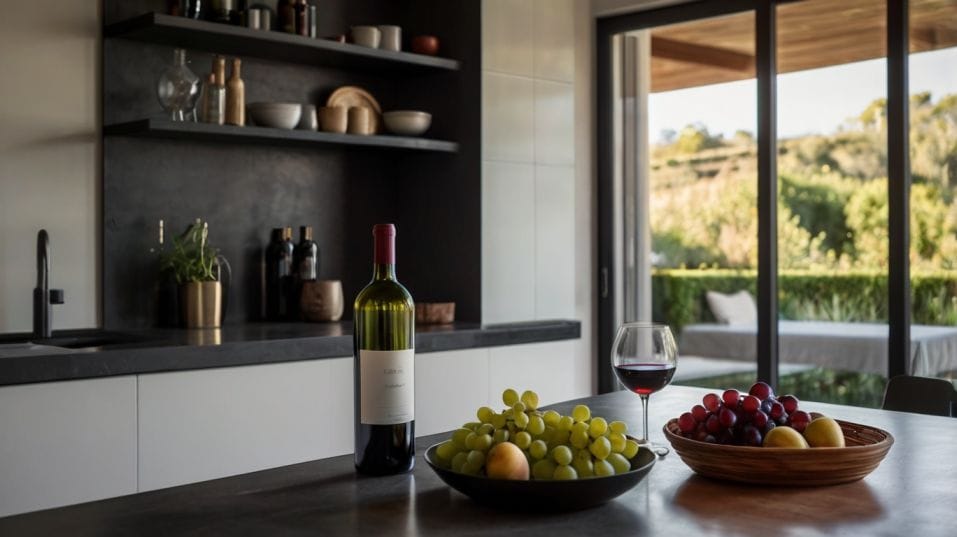Wine Serving Temperatures: A Quick Home Hack
Make every bottle taste better with one simple shift: serve wine at the right temp—no gadgets, just easy home tricks that elevate every sip.

Are you letting the wrong temperature mute your wine’s potential? If you’re just beginning your wine journey, knowing when to chill—or not—can unlock bold flavor, lift aromas, and turn a basic bottle into something truly expressive.
You don’t need fancy gear or a cellar. Just a few practical tips and a better feel for how temperature shapes what you taste. Here's how to master it, right from your kitchen.
Why Temperature Matters More Than You Think
Wine is alive in the glass. Its structure—acidity, tannin, alcohol, fruit—is constantly shifting based on the environment around it. And temperature has one of the biggest influences.
When a wine is too cold, flavors tighten. Fruit notes hide. Tannins feel sharper, and texture flattens. That mineral-driven white suddenly tastes like lemon water. That bold red turns thin and aggressive.
Too warm, and it swings the other way. Alcohol leaps out. Aromatics get muddled. What should feel fresh or focused now seems heavy or overripe. Even balanced wines can feel clumsy if served too hot.
The goal isn’t precision for the sake of it. It’s to serve wine at the temperature where its flavors express themselves best—where you can actually taste what the winemaker intended.
Once you hit that zone, you’ll realize it’s not the price of the bottle that matters most. It’s how you treat it.

Rethinking the Red Room Temp Rule
You’ve probably heard that reds should be served at room temperature. Here’s the catch: that advice came from a time when “room temperature” meant a cool, drafty European dining room—around 60–65°F (15–18°C).
Not your 75-degree apartment on a summer night. Most red wines benefit from being slightly cooler than your typical indoor temperature.
That slight chill pulls back the alcohol and sharpens the wine’s focus. Flavors become more defined. Structure tightens. Fruit feels fresher.
If you’re drinking a medium to full-bodied red—think Merlot, Syrah, Malbec, or Cabernet Sauvignon—pop it in the fridge for about 20 minutes before serving.
For lighter reds like Pinot Noir or Gamay, go for closer to 30. The wine should feel cool to the touch, not cold. When in doubt, err on the side of cooler. You can always let it warm in the glass.
Whites and the Cold Trap
On the flip side, white wines are often poured straight from the fridge—and that’s usually too cold.
Standard fridges run between 35–40°F (1–4°C), which is fine for storage, but tightens the flavor to the point of muting it. Acidity dominates. Subtle aromas vanish. Texture stiffens.
Letting a white wine sit out for 10–15 minutes before serving brings it into a better tasting range—around 45–55°F (7–13°C), depending on the style.
The change is subtle but noticeable: fruit becomes more expressive, florals come forward, and the wine feels rounder and more complete on the palate.
For aromatic whites like Riesling or Sauvignon Blanc, just a slight rise in temperature is enough to unlock their perfume.
Fuller whites—Chardonnay, Viognier, even white Rhône blends—need a bit more warmth to show depth and texture.
Sparkling Wines and Lifting the Chill
Sparkling wines have their own sweet spot. Most people serve them icy cold, thinking it preserves the bubbles.
While a lower temp does keep the mousse tight, it also suppresses aroma and flavor. A Champagne or grower Cava served at fridge temp will show mostly acidity and texture—until it warms a few degrees and suddenly comes alive.
Instead, let the bottle rest five minutes out of the fridge before opening. The wine will still be crisp and refreshing, but you’ll get a fuller picture: brioche, stone fruit, citrus oil, mineral tension.
Even budget bottles benefit from this slight temperature shift. If the goal is to enjoy more than just the fizz, give it room to speak.
How to Nail It Without Special Tools
You don’t need a thermometer. You need time, and a little attention.
Use the kitchen counter.
That’s your secret weapon. If a bottle’s been in the fridge, set it out for a short spell before serving. If it’s been sitting out, give it a quick stint in the fridge. About 15–20 minutes in either direction tends to do the trick.
Hold the glass.
Your hand naturally warms the wine. If a white or sparkling starts out too cold, swirl it gently and hold the bowl in your palm for a minute or two. You’ll notice the aroma start to expand.
Trust your taste.
Take a small sip when you first pour, then wait five minutes and taste again. If it improves, you're on the right track. That simple practice helps you understand how a wine responds to temperature—and helps you develop your palate over time.
Avoid the extremes.
If the bottle sweats like a can of soda or feels hot to the touch, it’s too far off the mark. Wine doesn’t need a perfect degree to shine, but it does need a range that respects its structure.
Final Thoughts
Serving wine at the right temperature isn’t a luxury move—it’s one of the most practical ways to make every bottle taste better.
No apps, no gadgets, no wine fridge required. Just a little timing, a little awareness, and the willingness to adjust by feel.
This week, experiment. Cool your red slightly before dinner. Let your white take the edge off its chill. Taste, wait, taste again. Let the wine guide you. You’ll start to notice when it sings, and that’s when you know you’ve found its rhythm.
The more you practice, the more intuitive it becomes. And the better the wine will taste—regardless of price, label, or style. Try it tonight. All it takes is one small shift to change how you experience wine from here on out.




